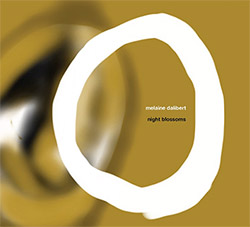
French composer & pianist Melaine Dalibert's 6th solo album, works developed using an algorithmic approach to composing, such as retrograde sequences or cellular automaton, generating beautifully delicate patterns that he performs on instruments chosen for their tonal qualities, David Sylvian adding electronic coloring to the pieces "Yin" and "Yang".
In Stock
Quantity in Basket: None
Log In to use our Wish List
Shipping Weight: 3.00 units
EU & UK Customers:
Discogs.com can handle your VAT payments
So please order through Discogs
Sample The Album:
Melaine Dalibert-piano
David Sylvian-sound contributions
Click an artist name above to see in-stock items for that artist.
Label: elsewhere
Catalog ID: elsewhere 016
Squidco Product Code: 30530
Format: CD
Condition: New
Released: 2021
Country: USA
Packaging: Cardboard Gatefold
Recorded at La Soufflerie, in Reze, France, on March 18th and 19th, 2021. by Lucas Pizzini.
"night blossoms is French composer/pianist Melaine Dalibert's sixth solo album, consisting of new compositions from 2019-2021. Of the six pieces on this album, 'A Rebours', 'Windmill', 'Eolian Scape', and 'Sisters' were written around the same time as most of the pieces for his 2020 album Infinite Ascent. While Infinite Ascent featured his intuitive compositions in a pop style, night blossoms features works further developed with his algorithmic approach, which has been his long-term pursuit as a composer.
'A Rebours', which is a cousin to his 2019 piece 'Litanie', was written based on a binary coding of the retrograde sequence. 'Windmill' was composed based on a cellular automaton that generates patterns on a Lydian scale. 'Eolian Scape' is a toccata-style piece that makes a chain of different polyrhythmic states progressively integrating all the notes of the modal scale. 'Sisters', originally written for two pianos, takes the form of a canon, with the patterns of different periodicities superimposed, creating an undulating polyrhythm that gradually changes harmonic colors. The first three pieces were played on a muted upright piano to control the harmonic saturation which could result from the repetition of the patterns at a fast tempo, creating intimate colors.
The two pieces 'Yin' and 'Yang' are based on a random melodic thread running through the keyboard, with a zigzag of rising and falling musical intervals but following strict rules. Only the notes of the pentatonic mode of F-sharp mode (black keys) were played in 'Yin', while only those of the pentatonic mode of C (white keys) were played in 'Yang'. Deriving from the same algorithm, these two pieces complement each other while having different forms.
"Since my composition of 'ressac', I had the idea in mind to add a kind of electronic shadow, supporting the long moments of resonance, as a free counterpoint to my most minimal algorithmic compositions." (Melaine Dalibert)
In response to Dalibert's idea, David Sylvian contributed his sound work to 'Yin' and 'Yang', delicately fluctuating and echoing electronic shadows of piano tones, adding depth and dimensions to Dalibert's algorithmic compositions.
The album title night blossoms was conceived by Sylvian, who also contributed his artwork for the album cover, as he also did for all three of Dalibert's previous elsewhere CDs: 'Musique pour le lever du jour', 'Cheminant', and Infinite Ascent."-elsewhere
" schoolchildren still read The Wind in the Willows? They should. Listening to this music brings to mind the tiny cleansing breeze proffered by Pan. It ensured, following the little otter's rescue, that Mole and Rat weren't to remember their encounter with that fabled piper at the gates of dawn, mitigating the impression which would most certainly have shaped their lives and burdened their hearts. Only the impression is left, as with so many of the finest moments on pianist and composer Melaine Dalibert's Night Blossoms. As with his other releases, Dalibert breaks boundaries difficult to define but easy to hear, rendering and dissolving their polarities with a new iteration of his already luminous language.
Quietly, with determination and a form of actualization obviously won through strength of will, Dalibert is reshaping his conceptions of tonal center and, more important, of development, both within a piece of music and between works. His new disc demonstrates that these changes encompass sounds well beyond our analytical abilities, given the current state of vocabularies relating to Western European Art Music. Watch that language fail to describe even the subtlest sounds here, like those resulting from the piano sonority governing the first three pieces. They were recorded on a muted upright, affording a drastically modified sonic picture in which the piano is transformed into a harp, a distant dulcimer or a keyboard instrument from another age. In combination with the music's algorithmic nature, familiar to any Dalibert devotee, this timbral shift opens onto an entirely new vista of the moods resulting from tone and overtone in vibration and flux. The overtones dissolve in a way that conjures ghosts of their fundamental pitches, rapping them in a kind of doppelganger mystery, each a cosmos in creation before being discarded. Of particular timbral interest is the shimmering "Eolian Scape." The overtonal melody generated from the rapidly repeated opening pitch is then augmented by the emergent and piquantly shifting tonal centers. While each morphing rhythm is clear and present, the muted strings release richly perfumed clouds of modal harmony, as on the gently undulating "Windmill." The bittersweet merging of sonorities carries over to the album's second half, especially when the music is more obviously combinatorial, as with the interlocking two-piano texture of the canonic "Sisters."
Bookending "Sisters," we hear two pieces distilling and resituating Dalibert's art via collaboration. Its minutely carved steps and glacial arcs receive electroacoustic input from David Sylvian, who also titled the album and provided the artwork. In "Yang" and "Yin," even the polarizing concept of collaboration does the music's unity little justice. Each piece is limited to a scale - "Yin" pentatonic and "Yang" diatonic - but is then bathed in what Dalibert calls electronic shadows. That they certainly are, inhabiting the tone environments in each key stroke, but the relationship transcends even the light-and-shadow duality. It seems that each "shadow" utterance derives from the piano recordings, each manifestation placed in time-altering juxtaposition with the others to form a network of stillness creating but simultaneously defying motion and gravity. The protoplasmic harmonies opening "Yin" ooze and elide, only gradually settling, and never quite completely, on the piano's rich pentatonic domain. A bit of dissonance is constant, or at least recurrent, shadows in the light of discovery and translucent revisitation. "Yang"'s electroacoustic alter-ego combines literal note repetition with the distant mechanical workings of an existence only just audible, a reverberant ghost in various states of non-action.
Beyond the serialized elements of action and interaction, bolstering the hum, buzz and softly luminous articulations, only foregrounded at a key moment in the music's wisely slow unfolding, is the sound of the room itself. It's most readily apparent after it has vanished, about a minute before "Yin"'s conclusion. A nearly imperceptible but palpable lifting occurs, as if a door opens, a pane of glass has been rolled back or walls have suddenly dissolved. In that moment of clear light, a reflection remains whose import eschews time and verbiage. Its substance distills and embodies but never reiterates all preceding events. In its elastic seconds resides a frozen moment of gentle exhalation, subtly sweeping away all but the peace of imminent silence."-Marc Medwin, Dusted Magazine

The Squid's Ear!
Get additional information at Dusted Magazine
Artist Biographies
• Show Bio for Melaine Dalibert "Melaine Dalibert is a French pianist and composer born in 1979. After studying piano in Rennes and Paris conservatories (with Joël CAPBERT and Pierre REACH), he dedicates himself to contemporary art creation as a performer (première pieces from Gérard Pesson, Giuliano D'Angiolini, Tom Johnson, Ahmed Essyad among others) while initiating a persona composition work based on rigorous generative systems. Melaine shares preoccupations with visual artists such as François Morellet, Véra Molnar or Marcel Dinahet, whom he has collaborated with, and his music is deliberately emancipated from any narrative purpose in order to highlight combinatorial games vacillating between order and chaos. His creations have been radio transmitted (France Musique) and played in many French and foreign museums and contemporary art centers." ^ Hide Bio for Melaine Dalibert • Show Bio for David Sylvian "The David Sylvian that fronted new wave pop band Japan wore luminescent hair and glam make-up; on the cover of his solo debut, 1984's Brilliant Trees, he was stylish and refined, a gentleman popster. But the illustration that introduces 2003's Blemish sends a different message: he's bedraggled and unshaven, his far-off expression turned haunted. The new millennium has seen a more serious Sylvian, several steps further along on his musical journey and seeking new sounds to explain new traumas. While Japan started off as one of many '70s New Romantic bands, they made an unpredictable break with their hit "Ghosts" - a searching and evocative single where spare rhythms and fleeting electronic sounds lay under Sylvian's smouldering tenor. "Writing 'Ghosts' was a turning point for me," Sylvian recalls. "So much of what we created with Japan was built upon artifice. With that song I'd felt I'd had the breakthrough I was looking for. I'd touched upon something true to myself and expressed it in a way that didn't leave me feeling overly vulnerable. In the coming years I'd forget about all notions of vulnerability, opening up the material to a greater emotional intensity. I knew that I had to find my own voice, both figuratively and literally." On his solo records of the '80s, Sylvian's explorations in music took him from the pop-funk, stylish jazz and windswept exotica of 1984's Brilliant Trees; the ambient landscapes and epic ballads of 1985's Gone to Earth; and the romantic orchestrations of 1987's Secrets of the Beehive. His collaborators included leaders of progressive music, from jazzmen such as Mark Isham, John Taylor and Kenny Wheeler to the rock and fusion guitarists Robert Fripp, Bill Nelson, and David Torn. All three albums married strong melodies to intricate atmospheres. "The details are what always interested me. And so I just began to spend more and more time on those details, until they came to the forefront of the material-textures and atmospherics. I began to elaborate on those more and more and push the rhythmic element a little bit further back." Other projects from that period included ambient works with trumpeter Jon Hassell and Can alumnus Holger Czukay, as well as a collection of photographic collages titled Perspectives, whose exhibition in Tokyo sparked the documentary video, Preparations For a Journey. Regular collaborations with composer and Yellow Magic Orchestra star Ryuichi Sakamoto yielded Sylvian's first international hit, "Forbidden Colours." In the early '90s, Sylvian embarked on a series of acclaimed tours with Robert Fripp, leading to their 1993 studio release 'The First Day' as well as their 1994 multi-media installation 'Redemption - Approaching Silence' in Tokyo's P3 gallery. This followed Sylvian's first foray into the world of art installations in 1990, when in collaboration with Russell Mills, Sylvian created the installation entitled 'Ember Glance (the permanence of memory)' also held in Tokyo. And 1991 saw the release of Rain Tree Crow, a Japan reunion under a different name. But Sylvian grew less prolific as the decade wore on, enjoying his new marriage to Ingrid Chavez and taking four years to finish 1999's Dead Bees on a Cake. As seductive yet eclectic as any of his prior work, Dead Bees included the hit single "I Surrender," where Sylvian crafts an eye-openingly beautiful vessel around his spiritual journey. Immediately following Dead Bees on a Cake, Sylvian also released a retrospective of his work titled Everything and Nothing, a re-arrangement and re-evaluation of his career dating back to Japan. Sylvian's work with his spiritual teachers has led him through a rigorous process of study and self-examination. Says Sylvian, "I've never come across anything that is as pinpoint accurate as the message you get through the guru. You go through this process with other people who have common goals, you see them confronting their fears, the tests that they're put through, and you look at the manner in which they're tested and think, 'I could handle that.' But when the opportunity for you to learn from your fears comes along, it's like, 'Jesus Christ, give me any other lesson you choose, but not that one.'" His determination to confront his vulnerabilities led to arguably his most powerful album to date, 2003's Blemish. Recorded in his home studio in six weeks, with contributions received via the Internet from improv legend Derek Bailey and electronica artist Christian Fennesz, Blemish captured Sylvian in the process of breaking up with his wife. "I wanted to get into those difficult emotions, and penetrate them as deeply as I felt I was capable of doing, in the security of that working space. So although there were elements of my life that were bringing all these negative emotions to the fore, what I was doing in the studio was taking them further - whereas in life we try to restrain them, we hold them back. We don't allow ourselves to go too far with it because they feel dangerous, they feel threatening," says Sylvian. "Living through these emotions was very difficult, but finding a voice for them was so cathartic. After that six-week period, I'd felt I'd worked through some very difficult emotions. I felt an enormous amount of release." Blemish also marked the debut of his own independent label, SamadhiSound. "I think of [SamadhiSound] as being global, and not necessarily based in the States. It's stretched between the States, Europe, and Japan. I think nowadays it doesn't really matter where we are physically located. We create our own culture around us to a large extent, whether it's what we're listening to, what we're watching, what we're reading - it can have very little to do with one's immediate cultural environment. We are in a global culture in that respect." Samadhi has featured artists from around the world, including new releases by Sweet Billy Pilgrim, Harold Budd, Thomas Feiner, and David Toop, and the last studio recordings by Derek Bailey. This reach is also borne out in a remix album, The Only Daughter, where pieces from Blemish are reinterpreted by artists including Burnt Friedman, Sweet Billy Pilgrim, and Jan Bang and Erik Honoré. Most of the pieces on Blemish depart from traditional pop song forms, a process that began all the way back with "Ghosts" and that continues in his solo work. More recently, he has also released Snow Borne Sorrow and Money for All, an LP and EP from the band Nine Horses. Nine Horses is a trio that includes his brother and regular collaborator Steve Jansen and electronica artist Burnt Friedman, as well as contributions from singer Stina Nordenstem, trumpeter Arve Henriksen, and Ryuichi Sakamoto on piano. Alluring and urbane, the project's trip-hop textures belie its troubled lyrics, inspired by both personal affairs and world concerns. His single with Sakamoto, "World Citizen" - recently featured on the soundtrack to the film Babel - bluntly captures his concerns as a global artist living in post-9/11 America. "It wasn't my natural inclination to get into writing protest songs. But it was a request from Ryuichi to give it a bash. And I felt that there was very little dissent being vocalized in the States," says Sylvian. "I feel furious at what's being done in the name of the American people." In 2009, the project that began in Blemish continues with Manafon, an album that assembles the world's leading free improvisers, including Evan Parker, Keith Rowe, Fennesz, Sachiko M, Otomo Yoshihide, and John Tilbury, among several others. In small ensembles, the improvisers create backdrops for the skeletal songs, and challenge the relationship between improvisation and composition, ensembles and lead voices, and intimacy and solitude. Lyrically challenging, it is also one of the most astonishingly and unpredictably beautiful works Sylvian has produced. Most recently Sylvian revisited the presentation of his music in forms beyond the CD. 'When loud weather buffeted Naoshima' was commissioned by the Naoshima Fukutake Art Museum Foundation on the island of Naoshima, Japan, as part of the NAOSHIMA STANDARD 2 exhibition which ran from Oct 2006 to April 2007. The composition was site specific. In fact, Sylvian has said that the work isn't really complete until the sounds of the town Honmura are incorporated into the listening experience. The piece has since been added to the foundation's permanent collection. In 2009, Sylvian collaborated with composer Dai Fujikura and a small ensemble on the audio installation "When we return you won't recognize us," located on Gran Canaria of the Canary Islands. The work was inspired by a 2003 genetics research article focusing on the Canary Islands, which discovered that despite Spanish colonization and the slave trade, fully half to three-quarters of the population retains its aboriginal genetic lineage. As Sylvian writes, "My interest lay in the connection between the physical or scientific reality of our biological make-up, the links to lineage (genetic genealogy), location and, to move beyond the realm of science into intuitive logic, the interior life of a community or people. An implied cultural heritage." With the release of Manafon, Sylvian continues to confront the challenges, both personal and global, that have enriched his work for three decades. And he continues to follow this path - with patience, perseverance, and beauty.
"-Chris Dahlen ^ Hide Bio for David Sylvian
3/31/2025
Have a better biography or biography source? Please Contact Us so that we can update this biography.
3/31/2025
Have a better biography or biography source? Please Contact Us so that we can update this biography.
Track Listing:
1. A Rebours 3:39
2. Windmill 4:02
3. Eolian Scape 5:51
4. Yin 8:33
5. Sisters 12:26
6. Yang 8:12
Compositional Forms
Piano & Keyboards
Solo Artist Recordings
Electro-Acoustic
Duo Recordings
erstwhile
New in Compositional Music
Staff Picks & Recommended Items
Search for other titles on the label:
elsewhere.

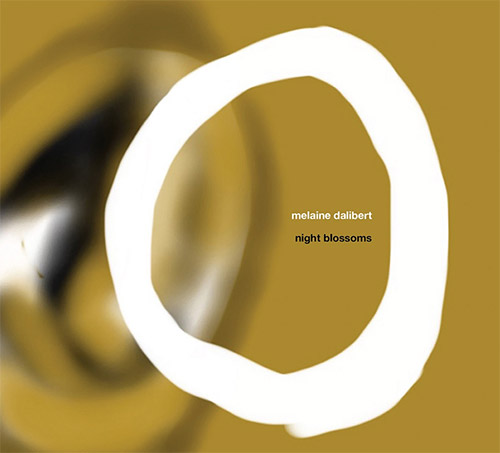





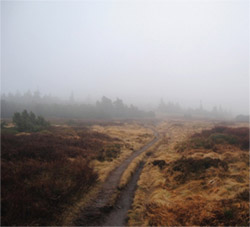


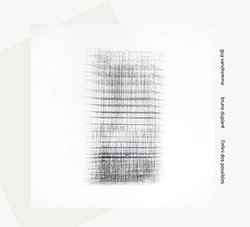

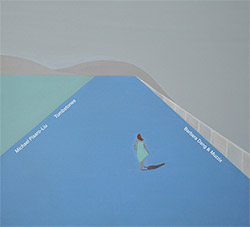




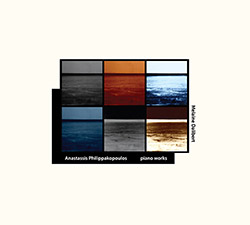





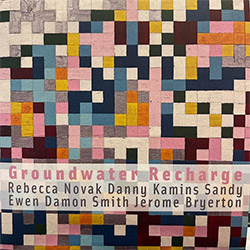



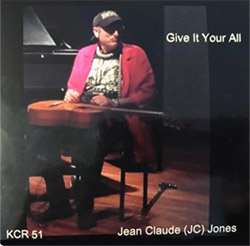

![Rodrigues, Ernesto / Nuno Torres / Guilherme Rodrigues: Whispers In The Moonlight - In Seven Movements [2CDs]](https://www.teuthida.com/productImages/misc4/35765.jpg)
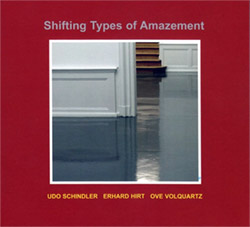


![Cocks, Laura: FATHM [VINYL]](https://www.teuthida.com/productImages/misc4/36055.jpg)





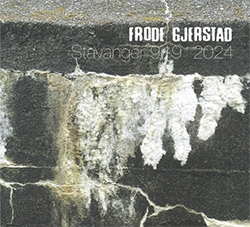
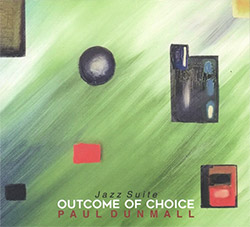
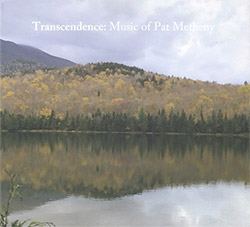
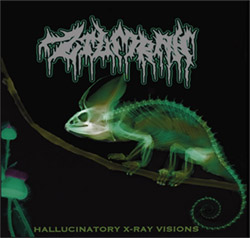

![Ackerley / Prymek / Turner: All Hope With Sleeping Minds [CASSETTE]](https://www.teuthida.com/productImages/misc4/35950.jpg)
![Myers, David Lee : Tin Drop Tear [BOOK w/ DOWNLOAD]](https://www.teuthida.com/productImages/misc4/36030.jpg)

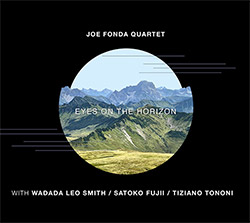

![Schindler, Udo / Sandy Ewen / Damon Smith: Munich Sound Studies Vols. 4, 5 & 6 [3 CDs]](https://www.teuthida.com/productImages/misc4/35966.jpg)
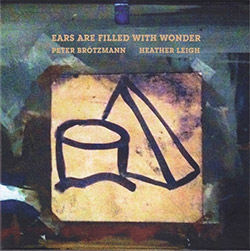





![Turbulence Orchestra & Sub-Units: Smear Out the Difficulties (Double Live) [2 CDs]](https://www.teuthida.com/productImages/misc4/36048.jpg)
![Perelman, Ivo / Tyshawn Sorey: Paralell Aesthetics [2 CDs]](https://www.teuthida.com/productImages/misc4/35871.jpg)
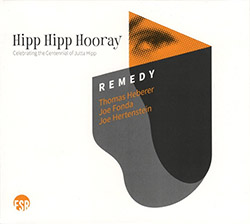

![Sjostrom, Harri: SoundScapes #4 Festival Berlin 2023 [3 CDs]](https://www.teuthida.com/productImages/misc4/35874.jpg)
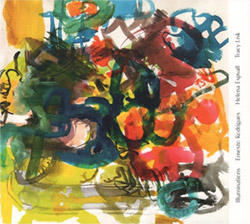


![Glenn, Jordan: Flustered [CASSETTE]](https://www.teuthida.com/productImages/misc4/35948.jpg)


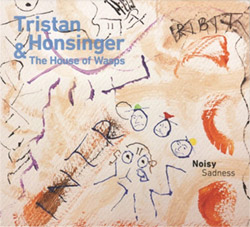
![Lindorff-Ellery, Evan: Church Recordings from Monhegan [CASSETTE]](https://www.teuthida.com/productImages/misc4/35949.jpg)
![Schindler, Udo / Werner Dafeldecker / Gunnar Geisse: Travelling Sound Images - Cognitive Transfers [Trio]](https://www.teuthida.com/productImages/misc4/35767.jpg)

![Egberth, Dennis: The Dennis Egberth Dynasty [VINYL]](https://www.teuthida.com/productImages/misc4/35549.jpg)


![Schindler, Udo / Rieko Okuda / Eric Zwang Eriksson: Disturbed Terrains [2 CDs]](https://www.teuthida.com/productImages/misc4/35330.jpg)



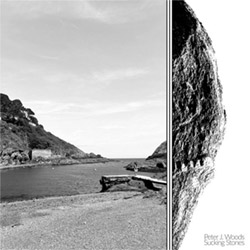


![Olencki, Weston : Pearls Ground Down To Powder [VINYL]](https://www.teuthida.com/productImages/misc4/35956.jpg)
![Myers, David Lee: Oculus [2CDs]](https://www.teuthida.com/productImages/misc4/35857.jpg)


![dustsceawung: dustsceawung [CASSETTE w/ Download]](https://www.teuthida.com/productImages/misc4/35753.jpg)




![Halls of the Machine: Atmospheres For Lovers And Sleepers [CASSETTE w/ DOWNLOAD]](https://www.teuthida.com/productImages/misc4/35806.jpg)


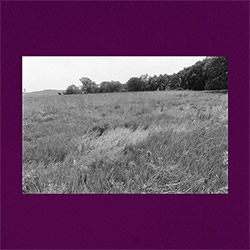
![AHC (Alexander Cooper): Lase [2 CDs]](https://www.teuthida.com/productImages/misc4/35754.jpg)



![Fagaschinski, Kai / Yan Jun : Graveyard Processions [VINYL w/ DOWNLOAD]](https://www.teuthida.com/productImages/misc4/35474.jpg)
![Brant, Cody / Carl Kruger: Smoke Detail [CASSETTE w/ DOWNLOAD]](https://www.teuthida.com/productImages/misc4/35551.jpg)








![Zorn, John / JACK Quartet: The Complete String Quartets [2 CDs]](https://www.teuthida.com/productImages/misc4/35609.jpg)

![Lonsdale, Eden: Dawnings [2 CDs]](https://www.teuthida.com/productImages/misc4/35480.jpg)







![Sanna, Claudio: Compositori Sardi Contemporanei II [2 CDs]](https://www.teuthida.com/productImages/misc4/35317.jpg)







![Zurria, Manuel: Fame di Vento [3 CDs]](https://www.teuthida.com/productImages/misc4/35167.jpg)

![Granberg, Magnus / Nattens Inbrott / Skogen: Holde Traume, Kehret Wieder! [2 CDs]](https://www.teuthida.com/productImages/misc4/35038.jpg)

![Electric Bird Noise / Derek Roddy: 8-10-22 [CD EP]](https://www.teuthida.com/productImages/misc4/35970.jpg)








![Elephant9 : Mythical River [VINYL]](https://www.teuthida.com/productImages/misc4/34624.jpg)



![Elephant9 with Terje Rypdal: Catching Fire [VINYL 2 LPs]](https://www.teuthida.com/productImages/misc4/35355.jpg)
![Deerlady (Obomsawin, Mali / Magdalena Abrego): Greatest Hits [VINYL]](https://www.teuthida.com/productImages/misc4/34876.jpg)







![Surplus 1980: Illusion of Consistency [CD]](https://www.teuthida.com/productImages/misc4/35069.jpg)
![Staiano, Moe: Away Towards the Light [VINYL + DOWNLOAD]](https://www.teuthida.com/productImages/misc4/35037.jpg)



![Caveira (Gomes / Sousa / Abras / Ferrandini): Ficar Vivo [VINYL]](https://www.teuthida.com/productImages/misc4/34643.jpg)
![Coley, Byron: Dating Tips for Touring Bands [VINYL]](https://www.teuthida.com/productImages/misc4/17906.jpg)

![Lost Kisses: My Life is Sad & Funny [DVD]](https://www.teuthida.com/productImages/misc4/lostKissesDVD.jpg)